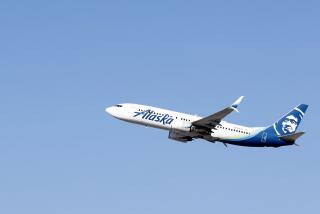In Crises, Airlines Go Strictly by the Book
- Share via
Airlines have carefully scripted procedures for almost every potential problem.
According to air safety experts, the crew of JetBlue Flight 292 followed these steps in preparing their Airbus A320 for Wednesday evening’s emergency landing:
Once an onboard indicator signaled a problem with the front landing gear, the pilot flew to Long Beach Airport, JetBlue’s regional hub, to allow airline personnel to inspect the plane from the ground.
Each airline has a special radio frequency to allow pilots to talk to ground personnel in emergencies.
Typically, the ground personnel would also be in touch with Airbus engineers in Paris.
But final decisions about how and where to land are the pilot’s. In this case, the pilot circled over the Pacific to burn off fuel, reducing the plane’s weight for a safer landing.
Flying low against higher air resistance, and with the landing gear down, burned fuel much faster than had the aircraft been at the normal altitude.
The pilot also told passengers about the problem, giving them enough information to understand the situation while trying not to trigger panic.
The landing was what pilots call a soft-field landing, the sort used on a mushy runway.
The goal was to keep the weight on the rear wheels as long as possible by keeping the nose elevated.
To assist with that, the flight crew asked passengers in the front to move to available seats at the rear and ordered carry-on luggage shifted to the back.
More to Read
Inside the business of entertainment
The Wide Shot brings you news, analysis and insights on everything from streaming wars to production — and what it all means for the future.
You may occasionally receive promotional content from the Los Angeles Times.










